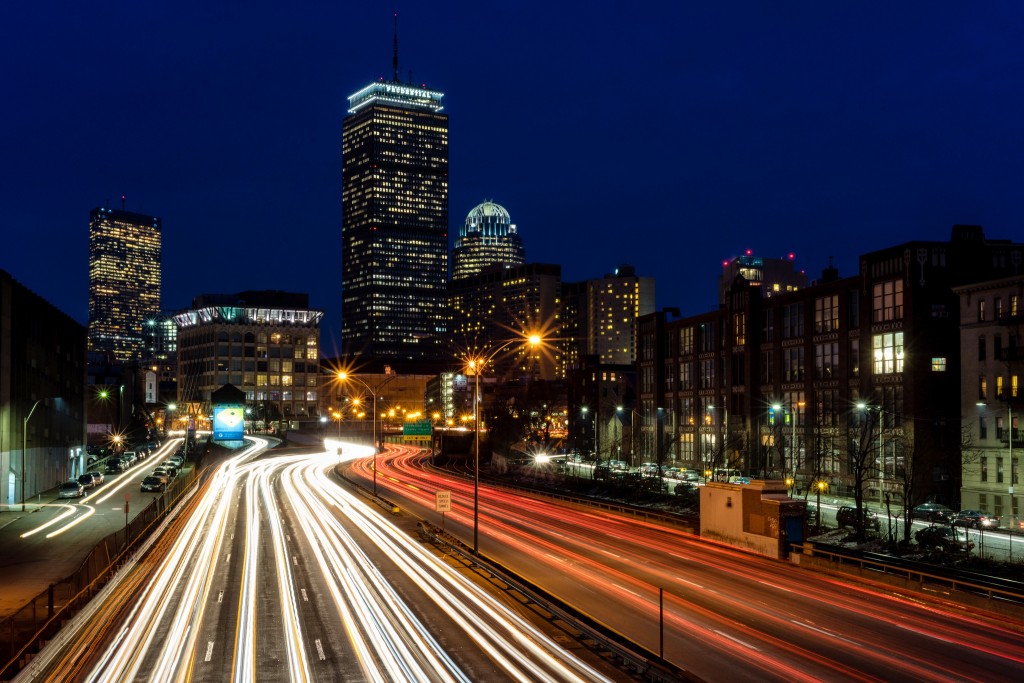
Boston is home to a number of next-generation modes of transportation. It’s affinity for fostering tech startups coupled with residents’ searing resentment for public transit are two crucial aspects that have made Boston a hotspot for the likes of Uber, Bridj, Hubway, Lyft and Hailo – just to name a few. A new report, though, suggests that these companies are, and will not be, responsible for shaping Bostonians way of getting from A to B.
A recent study from New York University with help from the Rockefeller Foundation examined four scenarios for U.S. cities’ future in mobility, using four specific examples. Rapid technological changes have spurred in Atlanta, Los Angles, New Jersey (obviously not a city, but a dense urban location nonetheless) and Boston, but the catalyst behind each is vastly different and lends credence to how these changes may continue in the future.
Looking ahead to the year 2030, researchers compiled over 150 scientific publications, media reports, essays and opinions as a way of gaining some foresight into the four municipalities’ future.
Boston, they found, is likely to boast a population density more compact than ever and it won’t be shaped by rideshare startups or the like. Rather, change could occur in three distinct shifts all pertaining to consumption, digital media and housing.
The first shift will be preliminary, taking place in 2020, at which point the theme of ‘collaborative consumption’ actually becomes the norm.
“With so much student debt, few young people actually own anything,” the report reads. “When pretty much any durable good could be summoned with a few swipes on screen, there was no reason to.”
And late at night, like crickets in the summer, the buzz of millions of drone bots lifting off into the sky could be heard through the open window
The second shift yields an increased digestion of digital media, followed by a boom in alternative housing design and development that results in a wave of people moving into sustainable micro-apartments in downtown Boston.
Together, this trifecta of facets has the potential to turn Boston into a prosperous yet introverted city. And as far as transportation is concerned, the consequence could be an emphasis on walkability and bolstered streetscape infrastructure.
The report’s scenario for Boston is essentially this: new mobile technologies make it easier for people to remain in their living spaces; the economics of today have instilled in Bostonians an altruistic approach to material goods and subsequently smaller, more affordable housing; and with less of a need to travel from one place to another, “a wave of placemaking took hold, as local business, community groups, and public space advocates deployed a wide array of tactical interventions to reclaim street space previously devoted to moving and parking cars.”
With a steep decrease in dependence on automobiles, the report speculates that there will be an increase in investing in repurposed land. Whether to be used for more micro-apartments, urban farms or public parks, Boston’s open spaces will be molded more from the perspectives of transpirational efficiency and environmental factors than startups and corporate competition.
The future of Boston differs significantly than the other cities and accompanying scenarios. In Atlanta, urban sprawl has given way to the tech giants like Google testing out new vehicular technologies and map interfaces. In Los Angeles, continued traffic congestion has paved the way for self-driving cars to become commonplace. In New Jersey, Hurricane Sandy still sits in the forefronts of urban planners and improvements have been made so that infrastructure can withstand the torrents of Mother Nature.
So while these places are more likely to adapt for vehicular transportation, Boston may be more inclined to develop away from them. Economic benefits abound for the city as a result of this, but on the flip side it could make Bostonians more complacent in mobile apps and other tech that allows them to remain idle.
But is this really the kind of future we want to come into fruition?
“By 2045, substantial volumes of nightly freight delivery were being done by air, and the surface of vehicle fleet was phased out, replaced by airborne swarm of small drones, the character of the city began to change,” concludes the report. “The streets were even more friendly than before, and late at night, like crickets in the summer, the buzz of millions of drone bots lifting off into the sky could be heard through the open windows.”

